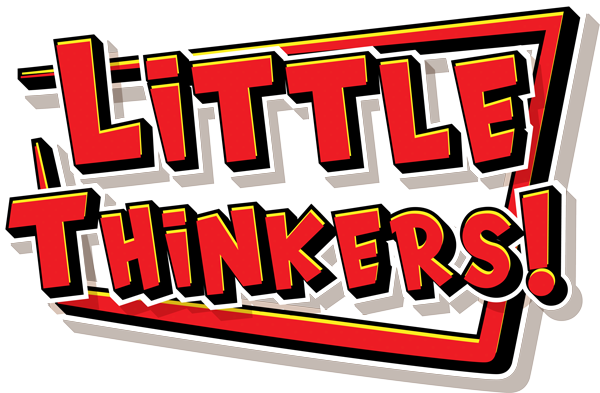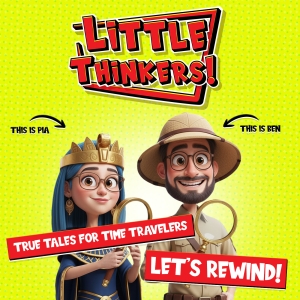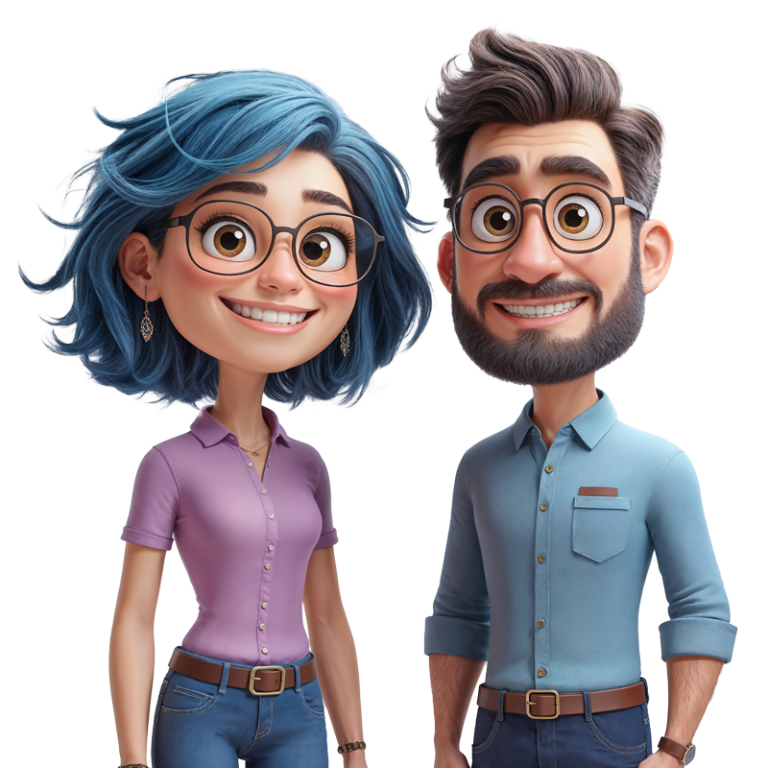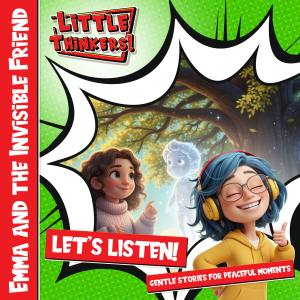The Amazing Story of Alice Ball: The Young Scientist Who Turned Oil into Hope
Imagine Being the First to Solve an Impossible Problem
Picture this: You’re in a laboratory filled with mysterious bottles and bubbling liquids. Outside, palm trees sway in the Hawaiian breeze, but inside, you’re focused on one of the most challenging puzzles of your time. You’re only 23 years old, and you’re about to discover something that will change thousands of lives forever. This is the incredible true story of Alice Augusta Ball, a brilliant young chemist who turned a stubborn, bitter oil into medicine that brought hope to people who had lost it completely.
A Curious Mind from the Very Beginning
Alice Ball was born in 1892 in Seattle, Washington, during a time when rain tapped against windows and families gathered around fireplaces to read together. Her family loved learning and creativity – they were photographers who understood the magic of light and chemistry. Alice’s grandfather, James Ball Sr., was one of the first African American men to learn photography in the United States!
From the time she was little, Alice carried a small notebook in her pocket. She filled every page with tiny questions about the world around her. Why did some liquids mix while others separated? How did light change when it hit different materials? She believed that the tiniest parts of matter held the biggest secrets.
Fun Fact!
Alice’s family ran a successful photography studio in Seattle. Back then, developing photographs required knowledge of chemistry – mixing the right chemicals to bring pictures to life. This early exposure to chemistry probably sparked Alice’s love for the subject!
From Seattle Student to Hawaiian Pioneer
Alice studied hard at the University of Washington, where she learned how elements combine and separate like pieces of a giant puzzle. She discovered that she loved pharmacy and chemistry because they could help people directly. Measuring powders and timing chemical reactions felt like creating music to her – everything had to be perfectly balanced.
When Alice was in her early twenties, she made a brave decision. She would travel across the Pacific Ocean to Hawaii, where the College of Hawaii (now the University of Hawaii) had invited her to continue her studies. Imagine boarding a ship and sailing for days across the vast ocean to a place you’d never been, all for the chance to learn more!
In Hawaii, Alice accomplished something truly remarkable. She became the first woman AND the first African American chemistry instructor at the university. Students loved her calm, clear teaching style. She made the laboratory feel like a safe place where anyone could discover amazing things.
Did You Know?
- Hawaii wasn’t even a U.S. state yet when Alice arrived – it wouldn’t become the 50th state until 1959!
- In Alice’s time, very few women worked as chemists, and even fewer were professors
- She completed her master’s degree studying local Hawaiian plants and their chemical properties
The Challenge That Changed Everything
One day, Dr. Harry T. Hollmann knocked on Alice’s laboratory door with a thick file under his arm. He had a problem that had stumped scientists for centuries. People suffering from Hansen’s disease (once called leprosy) lived in fear and isolation. There was an oil called chaulmoogra oil that came from tree seeds in Asia, and some people believed it could help. But there was a huge problem.
The oil was thick, sticky, and absolutely dreadful to take. When people tried to swallow it, they became terribly sick. When doctors tried to inject it, it clogged the needles and caused painful lumps under the skin. It was like trying to inject peanut butter through a tiny straw!
Dr. Hollmann asked Alice if she could use her chemistry knowledge to make the oil work better in the human body. Alice looked at the file, then at her laboratory filled with glass bottles and precise instruments. She saw a puzzle that was perfect for patient, careful hands. “I’ll try,” she said quietly.
Life Back Then
In the early 1900s, people with Hansen’s disease were often sent to live in isolated settlements, far from their families. In Hawaii, many lived at Kalaupapa on the island of Molokai, surrounded by towering cliffs and crashing waves. Families were torn apart by fear and misunderstanding about the disease. Finding an effective treatment wasn’t just about medicine – it was about reuniting people with their loved ones.
Night After Night in the Laboratory
Picture Alice in her laboratory as rain drummed against the windows and the clock ticked toward midnight. Blue flames hissed under glass flasks as she worked by lamplight. She was doing something that had never been done before – breaking apart the chaulmoogra oil into its individual pieces, called fatty acids.
Like a detective examining clues, Alice studied each piece carefully. She tried mixing them with different alcohols and watching for changes that might help the body absorb them better. Most of her mixtures turned cloudy and remained just as stubborn as before. But Alice didn’t give up. She had learned that the best discoveries come to those who are patient and persistent.
Then, one night, something magical happened. Alice created what scientists call esters – special forms of the fatty acids that could move smoothly through a syringe. The liquid looked thinner and clearer. When she drew it into a syringe, it flowed easily without sticking or clogging. Her hand trembled slightly with excitement, but she knew this was just the beginning.
Science Spotlight
What Alice discovered is called “esterification” – a chemical process that joins fatty acids with alcohols. Think of it like connecting LEGO blocks in a new way to make something that works better. The new shape of the molecules made them friendly to both oil and water, so they could travel through the body more easily!
Hope Enters Hospital Rooms
At Kalihi Hospital in Honolulu, doctors prepared to test Alice’s new preparation. Sunlight striped the clean floors as they carefully measured small doses. The new ester drew smoothly into syringes – no clogging, no sticking. When patients received their injections, something wonderful began to happen.
Day by day, reports arrived with encouraging news. Many patients showed real improvement. Some regained strength they had lost. Most amazingly, some were allowed to leave isolation for the first time in years! Nurses wrote that the medicine could be given repeatedly without causing problems. The change was gentle but unmistakable.
Alice, still only 23 years old, read every report with quiet amazement. Her careful work in the laboratory had opened doors that had seemed permanently sealed. Hope had entered rooms that had felt hopeless for so long.
Amazing Results
- Patients who received the new treatment showed improvement within weeks
- Some people were able to return to their families after years of separation
- The medicine didn’t cause the painful side effects of the old oil
- Doctors could give repeated treatments safely
Letters Cross the Ocean
Exciting news traveled from hospital to hospital, island to island. At Kalaupapa, the isolated settlement on Molokai, people heard about the new treatment that actually worked. Doctors typed their observations with careful fingers, and letters crossed the Pacific carrying hope.
The new preparation earned a name that would echo through medical history: the Ball Method. Alice continued refining her process, making small adjustments to ensure the medicine was as safe and effective as possible. Each tiny change mattered because real people with real families were counting on her work.
But then, tragedy struck.
A Life Cut Too Short
In late 1916, Alice became seriously ill. Some historians believe she may have accidentally breathed harmful laboratory fumes, while others think she developed tuberculosis. The exact cause remains unclear, but what we know is heartbreaking: Alice had to return to Seattle to recover.
The rain that had welcomed her as a child greeted her again. Family voices gathered softly around her bedside, where her precious notebooks lay stacked nearby, filled with neat lines and brilliant ideas. Tragically, Alice Ball died in 1916 at just 24 years old. Her life was shorter than most people spend in school, yet she had already changed the world.
Remembering Alice
Though Alice’s life ended far too soon, her method continued to help people. Her laboratory techniques and chemical processes lived on in every vial of medicine that followed. She had created something that would outlast her own lifetime – a gift of hope that kept traveling to places she would never see.
The Fight for Recognition
After Alice’s death, something unfair happened. Other scientists continued making her medicine, but her name began to disappear from research papers. Arthur L. Dean, a senior scientist, started producing large batches of the medicine. Some publications began calling it the “Dean Method” instead of the Ball Method.
This was wrong, and fortunately, there were people who cared about the truth. Dr. Hollmann, who had originally asked for Alice’s help, published a report that clearly credited her as the creator of the first successful injectable preparation of chaulmoogra oil. Other doctors and scientists began using her name again in their letters and papers.
It took time, but truth has a way of rising to the surface. Alice Ball’s name returned to its rightful place in scientific history.
Why Credit Matters
In science, giving credit to the right person isn’t just about being fair – it’s about helping future scientists follow the correct path of discovery. When we know who really made a breakthrough, we can better understand how they did it and build upon their work. Alice deserved recognition not just for her feelings, but for the progress of science itself.
Twenty Years of Life-Changing Medicine
From the 1920s through the 1940s, the Ball Method helped thousands of patients worldwide. Hospitals reported fewer complications and better outcomes. People who had been separated from their families for years were finally able to return home. Children ran in circles on porches, calling out names they hadn’t spoken in so long.
The method wasn’t perfect – no medicine ever is – but it represented real progress. For the first time in history, there was an effective treatment that could be safely injected and repeated. Doctors learned to prepare doses carefully, and nurses watched over patients with new hope in their eyes.
In the 1940s, new antibiotic medicines called sulfones began to replace chaulmoogra treatments. These drugs, like dapsone, proved even more effective. But scientists never forgot what Alice had accomplished. She had shown that chemistry could solve problems others considered impossible. She had built a bridge from ancient tree seeds to modern medicine.
The Science Connection
Alice’s work was like the first rung on a ladder that led to better and better treatments. Every new medicine stands on the shoulders of earlier discoveries. Alice’s careful chemistry methods helped scientists understand how to modify natural substances to work better in the human body – a principle still used in drug development today!
How We Remember Alice Today
Walk across the University of Hawaii campus today, and you’ll find a special chaulmoogra tree growing near busy paths where students hurry to class with backpacks and coffee cups. Next to the tree stands a bronze plaque that tells Alice Ball’s story in simple, powerful words.
The tree’s seed pods still rattle softly in the Hawaiian wind – the same seeds that once seemed useless until Alice’s chemistry transformed them into hope. Students stop to read the plaque, then continue their day carrying her name and story in their thoughts.
But Alice’s recognition extends far beyond Hawaii. In 2000, the University of Hawaii dedicated a scholarship in her name for students studying chemistry. In 2007, the university hosted the first Alice Ball Centennial Celebration.
Alice Ball Day
February 29th – Leap Day – is now officially Alice Ball Day in Hawaii! It’s perfectly fitting that Alice gets a special day that only comes every four years, just like her rare and special contributions to science. Schools across Hawaii teach students about her discoveries, and children carefully write her name on worksheets, learning that heroes come in all colors, ages, and genders.
Recognition Around the World
Alice’s story has spread far beyond the Pacific. In 2019, the London School of Hygiene and Tropical Medicine added her name to their building alongside other scientists who changed the world. Workers carefully carved her name into stone, ensuring that people walking by would remember who she was and what she accomplished.
Universities across the United States now teach Alice’s story in chemistry and history classes. Science museums feature exhibits about her work. Young students learn that groundbreaking discoveries can come from anyone willing to work hard and never give up.
Modern Connections
Alice’s story teaches us something important about innovation: the best solutions often come from looking at old problems in completely new ways. Today’s scientists still use similar approaches – taking natural substances and chemically modifying them to work better in medicine. From aspirin (modified from willow bark) to many cancer drugs (modified from plant compounds), Alice’s approach lives on!
What Made Alice Special
Alice Ball was special not because she was superhuman, but because she combined brilliant curiosity with incredible persistence. She faced each challenge with patience and precision. When experiments failed, she tried again. When results were unclear, she tested them repeatedly until she was certain.
She treated every person who might receive her medicine as someone precious – because they were. She knew that behind every test tube and every measurement was a real human being hoping to get better, to go home, to hug their family again.
Alice also showed us that heroes don’t always make a lot of noise. She worked quietly, carefully, and kindly. She taught her students with gentle patience. She pursued truth without seeking fame. Sometimes the most powerful changes come from people who simply focus on doing good work.
Lessons from Alice
- Age doesn’t determine what you can accomplish – Alice made her greatest discovery at 23
- Persistence pays off – she tried many failed experiments before finding success
- Small changes can have huge impacts – her chemical modifications helped thousands
- Helping others is the best reason to work hard
- Truth always deserves recognition, even if it comes late
Alice’s Legacy Lives On
Today, when you see a scientist carefully measuring chemicals in a laboratory, think of Alice Ball. When you hear about a new medicine that helps people, remember that it might have started with someone like Alice – young, curious, and determined to solve problems that seemed impossible.
Her story reminds us that science is not just about memorizing facts or following recipes. Real science is about caring enough to keep trying when things don’t work, being precise enough to notice tiny but important differences, and being brave enough to tackle problems that scare everyone else.
Alice Ball lived only 24 years, but her impact stretches across more than a century. Every time a scientist modifies a natural substance to work better as medicine, they’re walking a path Alice helped create. Every time someone gets recognition for their scientific work regardless of their race or gender, they benefit from barriers Alice helped break down.
The Story Continues
Alice’s story isn’t really finished – it continues every day in laboratories around the world. Young scientists, many of them women and people of color, carry forward her legacy of careful, caring science. They face new challenges with the same patience and precision Alice showed over a century ago.
The next time you hear about Hansen’s disease, remember that it’s now completely treatable thanks to scientists who built upon Alice’s foundation. The next time you see a chaulmoogra tree or read about natural products being turned into medicines, think about a young woman in Hawaii who believed that impossible problems just needed the right approach.
Most importantly, remember that you don’t have to be famous or old or have fancy equipment to make a difference. Alice Ball started with curiosity, patience, and a willingness to help others. Those are tools that every young person already has. The question isn’t whether you can change the world – it’s what problem you’ll choose to solve first.
Your Turn to Explore
Alice Ball’s story shows us that the most amazing discoveries often start with simple questions. What questions do you carry in your pocket? What problems do you notice that others might overlook? Remember: every great scientist started exactly where you are now – with curiosity and the courage to begin.











